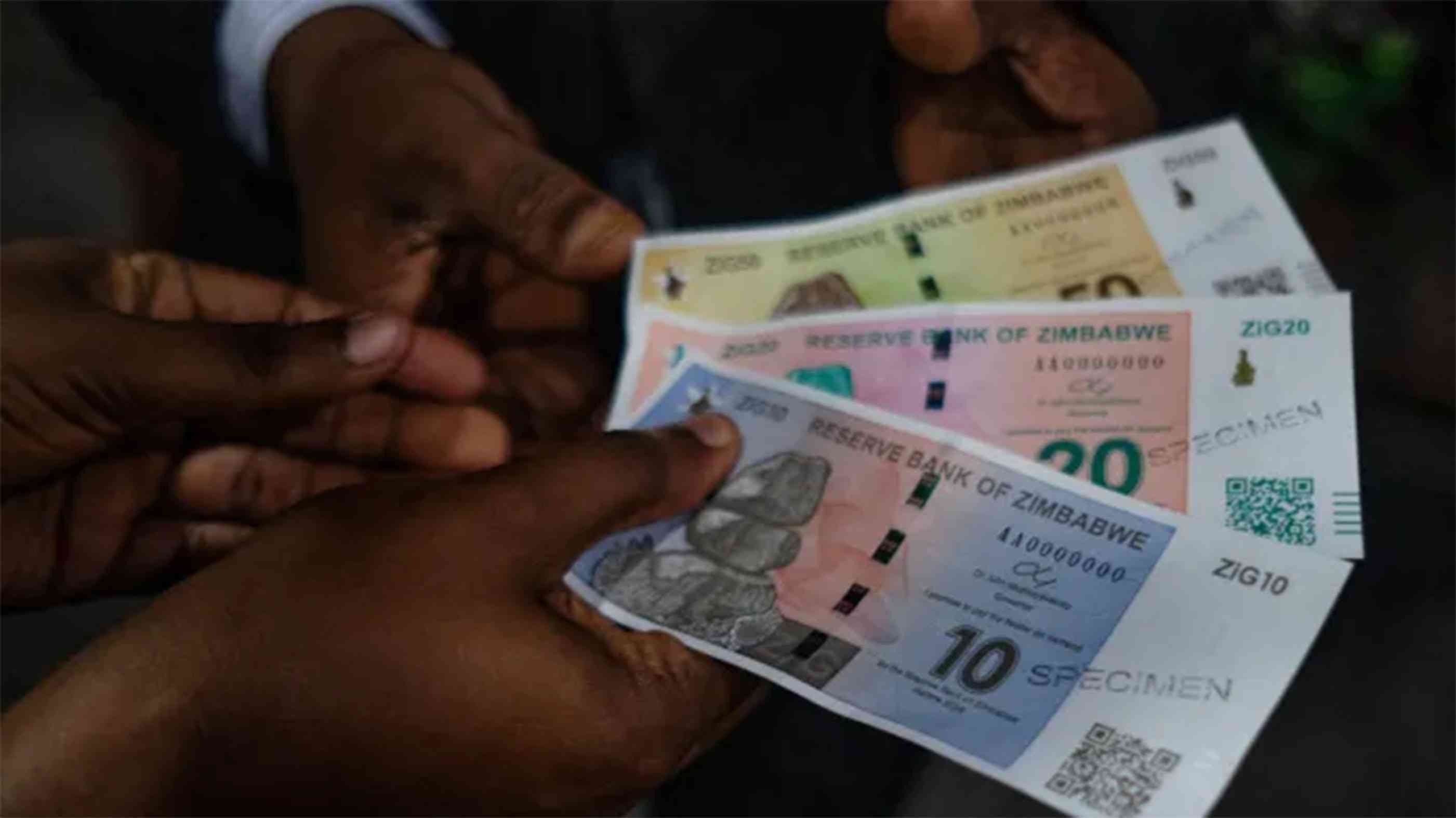
CLIMATE change is real. The average temperature of the earth's surface is currently 1,1⁰C warmer than pre-industrial levels (1850-1900). On the other hand, atmospheric temperatures are increasing by an even steeper margin.
Scientists agree that the major cause of the changes in climatic conditions can be attributed to human activity, which is responsible for the emissions of greenhouse gasses (carbon dioxide, methane, nitrous oxide, nitrogen trifluoride, sulphur hexafluoride, etc).
Economic activities, such as electricity generation, transportation, agriculture, waste disposal and industrial manufacturing, are largely responsible for the diffusion of these harmful gasses into the atmosphere.
Scientific studies have proven that greenhouse gasses trap the sun's heat, making it more concentrated and last much longer than it should. Subsequently, the earth's temperature has become hotter, through the years, as more emissions continue unabated.
Some of the consequences of the high temperatures, include rapid evaporation both on the land and in the oceans, which causes storms, cyclones, droughts and shifting seasonal patterns.
The extreme heat has also caused the waters in the seas and oceans to expand, leading to a rise in sea levels, threatening, particularly, island nations, and coastal residencies, anywhere around the world. Since the emissions are a result of human activity, countries around the world agreed to curtail the use of fuels and processes, which produce these gases.
In 1997, after comprehensive discussions, through the United Nations platform (UNFCCC), 192 nations signed the Kyoto Protocol. Through the protocol, the parties conceded that there was a need to reduce the emissions of harmful greenhouse gasses to 5% below 1990 levels.
Each country would provide auditable statistics of emission causing activities and regularly update on its programmes towards reducing emissions.
- COP26 a washout? Don’t lose hope – here’s why
- Out & about: Bright sheds light on Vic Falls Carnival
- COP26 a washout? Don’t lose hope – here’s why
- Out & about: Bright sheds light on Vic Falls Carnival
Keep Reading
For some corporations, reducing emissions is either too expensive or not possible. The Kyoto Protocol, therefore, created a mechanism which allows such emitters to only continue their operations, if they could finance another activity which reduces greenhouse gases, elsewhere. For example, a coal-fired power station, which could not reduce its greenhouse gas (GHG) emissions, would only be permeated to continue operating legally, if it could finance a forestry project or carbon capture technology, which absorbs from the environment, as much GHGs as the power station’s emissions. This led to what became known as carbon offsets.
A carbon offset is a removal of carbon dioxide emissions from the atmosphere, which is done as a compensation for CO2 emissions made by another entity. For example, if a coal-fired power station cannot reduce its emissions at its plant, it can invest in a forestry project elsewhere, which will be useful in absorbing GHGs.
Since emissions affect the earth's atmosphere and climate, regardless of location, an offset project does not necessarily have to be in the same country as the polluting entity. This means that the polluter, which may be in USA, can fund a carbon offset project in South Africa or Zimbabwe, whose carbon absorption will benefit the earth's climate, regardless of its location.
Additionally, investments, which are designed to avoid carbon emissions (which otherwise would have occurred), can also be accepted as offset projects. These may include, providing efficient cook stoves in the rural areas, with the aim of reducing deforestation and CO2 emissions through the use of wood fuel.
An offset is measured as tCO2, which represents a tonne of CO2. Greenhouse gas emission levels are determined through estimation or the use of accurate real time factory-installed technologies.
Other greenhouse gasses (methane, nitrous oxides, etc) are also translated in terms of tCO2, in the calculation of carbon offsets.
A carbon credit is, in turn, a carbon offset that is certified (confirmed, verified) by an independent institution or a government, which is also measured in terms of tonnes of CO2 removed from the atmosphere.
For example, a project, which is understood to remove 200 tonnes of carbon dioxide, will have 200 carbon credits, reflecting on its verifiable carbon credit certificate.
The credits can be sold to companies or governments that intend to use the offset as an indication of their mitigation measures towards addressing climate change.
In some cases, a company that produces 300 tonnes of carbon dioxide as pollution, can claim that, it, in actual fact, produced 100 tonnes, if it has carbon credits worth 200tCO2. Such a firm may acquire the credits through investing in its own, or another entity’s carbon offset project.
Alternatively, the firm can purchase the credits from relevant carbon markets, which will be explained later on.
Types of carbon offset projects
A number of projects can be used to generate carbon credits.
These are:
Forestry: Avoiding deforestation by protecting existing forests enables vegetation to continue absorbing and storing carbon dioxide. It is essential to state that trees also release carbon dioxide stored in them, when they are cut. Thus, deforestation has a double negative impact of reducing CO2 absorption from the atmosphere and increasing its presence as the trees are felled. Thus, the preservation of existing forests, restoring forests on land that was once forested (reforestation) and creating forests were there are none (afforestation), are all carbon offsetting projects, which are eligible for carbon credits.
Renewable energy: In this regard, credits are generated through projects in biogas, wind farms, solar or hydro electricity. Since renewable energy is usually profitable, in its own regard, without being tied to carbon credits, getting certified credits under this method, typically undergoes rigorous checks.
Energy efficiency: It covers the use of co-generation (heat and electricity) methods, in intense energy-dependent industries (such as cement or steel manufacturing). In households, the use of water filters to avoid the boiling of water using firewood (in rural areas), efficient firewood cooking stoves and energy efficient household appliances (in the cities), can be used as carbon offsetting projects, which can also generate credits.
Destruction of landfill methane: Methane can be extracted from landfills (garbage sites), livestock manure and used in biogas production or other waste-to-energy processes. Typically, methane has 20 times more greenhouse warming potential (GWP) than CO2. Thus when turned into energy, it may produce CO2 as a by product but that reduces the warming effect of the methane, by about 95%.
Technologies such as carbon capture using machines, biochar manufacturing, etc.
Prices
According to Abatable, a leading consulting and administration firm in the carbon markets, forest preservation projects have a minimum price of US$5 per credit (tonne of CO2 removed), with a maximum of US$20. Blue Carbon, which entails the preservation and reforestation of coastal vegetation, earns more, with a minimum price of US$15 per each credit.
Technologies, such as carbon capture utilisation and direct air carbon capture, generate the most expensive credits, with minimum prices of US$165 and US$300 per credit, respectively.
The first impressions for some may be that corporations in need of carbon credits will simply be inclined to purchase the cheapest ones, whilst the more expensive types do not have takers.
However, this is not necessarily so because some companies are willing to spend more for credits generated within their own countries, regardless of cost.
Additionally, the more expensive credits typically use offsetting mechanisms, which do not leave doubts about whether or not carbon dioxide was actually removed, from the atmosphere.
For instance, direct air carbon capture can produce auditable results, which can show the exact amount of CO2 harvested, unlike with forestry projects.
Voluntary and regulatory markets
Voluntary carbon markets (VCMs) involve corporations, which directly purchase carbon credits or fund offset projects in order to neutralize their own business process emissions. In VCMs, carbon credits are bought at the entities' own discretion and free will, and not under regulatory (legal) obligations.
For example, in 2021, the oil corporation, Shell, announced its targets to offset its emissions by purchasing 120 million tonnes of carbon credits by 2030. Companies do this as a way of playing their part towards addressing climate change, designing their brand, or as a way of aligning with some of their customers, suppliers, or regulators (governments), who may have the same concerns about climate change (values).
The global voluntary carbon market is worth a modest US$2 billion per year. This amount is just a fraction of the regulatory markets (US$909 billion), however.
Nevertheless, the VCM is set to grow to between US$10- US$25 billion, by 2030, thereby, providing bountiful opportunities, for those involved in carbon offsetting projects.
Regulatory carbon markets, also known as, Emissions Trading Schemes (ETS), use what are known as "cap and trade" regulations. The largest global ETS are; China NETS, EU ETS, and K-ETS, which are based in China, the European Union and South Korea, respectively.
Regulatory carbon markets, typically, do not cover all economic sectors (all companies) in their country but target the heavier polluters within an economy. As an example, companies involved in fossil-fuel powered electricity generation (oil, gas, coal) may be obliged to keep emissions of carbon dioxide within 300 tonnes, per year.
In order to enforce the regulation, each firm is provided permits for its 300 tonnes of CO2. Each regulated company is also identified by name and location, and is required to install technological systems, which monitor CO2 levels, in order to track progress and ensure compliance.
Monitoring data is transmitted daily to the regulator, via telecommunications, other IT systems or verifiable manual records. Companies, which reduce emissions (mainly through investments in fuel cleaning technologies) or switch to renewable energy, will then sell their permits (on the applicable ETS) to those, which cannot stay within the regulated limits.
As an example; under an annual regulatory limit of 300 tonnes CO2; company one is set to emit 400 tonnes by the end of the year, whereas company two is expecting to emit only 200 tonnes. In order to avoid heavy taxes, fines or other penalties; company one will have to buy 100 permits from company two, which can allow it to reach the 400 tonnes of emissions.
Such mechanisms allow firms which invest in renewable energy or fuel cleaning technologies to redeem their costs through the permit sales. Additionally, pollution limits will be consistently reduced, through the years, so as to ultimately reduce emission levels. It is crucial to state that, regulatory carbon markets do not typically accept carbon credits from carbon offset projects (forestry, renewable energy, etc).
Rather, they make use of the government-issued permits (pollution limits) within their own industry, since their major objective is to reduce actual emissions, instead of offsetting them through carbon absorption projects.
There are however, rare compliance markets, where carbon credits from offset projects can be used. One such is the South Korean Emissions Trading Scheme (ETS), were up to, only 5%, of a company's annual emissions can be cancelled out through carbon offset projects.
However, ongoing negotiations on Article 6 of the Paris Agreement, indicate that it may soon be possible to use more offset project credits for regulatory carbon markets as well.
Tutani is a political economy analyst. — [email protected]











